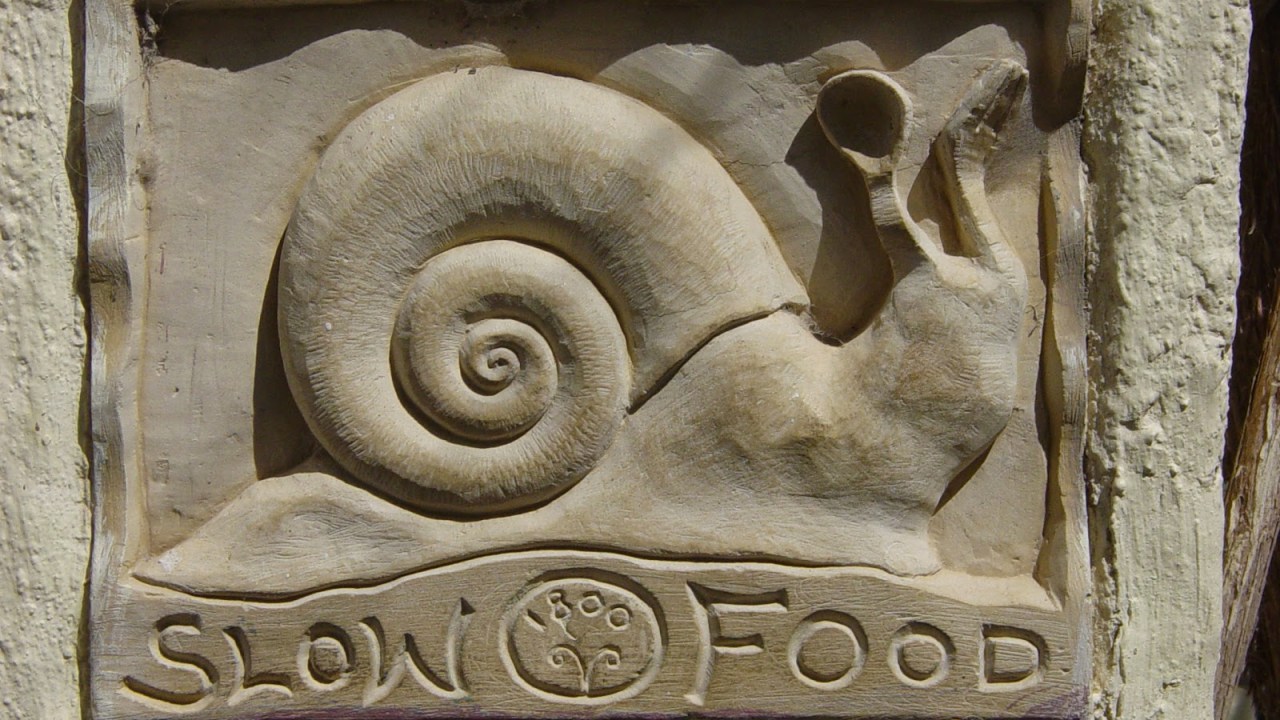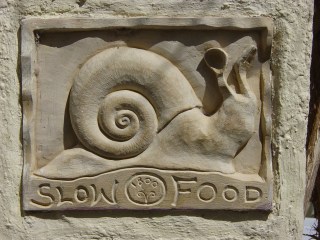
“Food should be more expensive.”
That’s a core message of the locavore/sustainable food movement, and it doesn’t resonate so well with most folks. It sounds ridiculous on the face of it—who wants to pay more for food?
But proponents of creating a “slow,” sustainable system of food production have a point. “Fast” food is cheap because we pass a lot of the cost on to society as a whole and future generations in particular. Subsidizing corn makes products using corn syrup inexpensive at the grocery store, but offloads the cost of obesity, diabetes and poor nutrition onto families, insurers and the social safety net. Water subsidies make it possible to grow cotton in areas where it would never naturally thrive, contributing to deforestation, water shortages and pollution.
Same with fast fashion. H&M can sell a polyester/spandex long-sleeved dress for $24.95 in part because it manufactures a quarter of its clothes in Bangladesh, which has the lowest wages in the world. And factories in the third world don’t have the costs of complying with OSHA regulations or the Fair Labor Standards Act.
The fact is, anything that looks like too good a bargain probably is hiding the true cost somewhere, present or future. Formally, these hidden economics are called “externalities” –costs that affect someone who didn’t choose to incur that cost. In TrendsWatch 2015 I point out that one of the reason “slow” goods and experiences (slow food, slow fashion, slow travel) are so expensive is that they tend to embody their full costs in their market price, while their cheaper alternatives externalize those costs onto others.
Benefits can be externalized, too. One example much in the news is the “herd immunity” that arises from a critical mass of people being vaccinated against communicable diseases. In other words, when you pay for a vaccine, you generate a (free) benefit to people in high-risk categories (e.g., infants, immunocompromised) who can’t themselves be vaccinated.
Economists see externalities—both costs and benefits—as signs of an inefficient market. Externalized costs mean a supplier makes more of a product than they would otherwise (since it is artificially cheap to produce). Externalized benefits result in the opposite: suppliers produce less of a product or service than they could because they aren’t getting paid the full value of their work. With more income, they would have the incentive, and means, to scale up.
Museums would do well to consider the externalized costs and benefits hidden in our nonprofit economic calculations, and how they affect the “supply chain” of museum services.
As publicly supported nonprofits, museums do have externalized costs that some people have not (personally) agreed to pay. By removing themselves from the tax rolls, museums freeload on city services supported by those taxes—though some municipalities are offsetting this with Payments in Lieu of Taxes. What are the side effects of these subsidies? Might the artificially low cost of running a museum (due to the subsidies provided by local, state and federal governments) actually lead to an overabundance of museums? Maybe this is one economic contributor to the all too common situation in which the population of nonprofit museums strains, or exceeds, the capacity of funders. (I refer you to the Kykuit II Summit on the sustainability of historic sites for a graphic description of the scope of that problem.)
It’s more cheerful to contemplate the externalized benefits museums provide—good things we provide even to people who don’t pay for them. Most museums get more support from admissions, membership fees and earned income than they do from tax subsidies or direct government support. But the presence of these museum benefits the whole community, even the whole state, not just visitors, members and donors. By acting as “anchor institutions,” museums can stimulate the local economy and make a neighborhood or city more attractive to prospective residents and employers. These benefits, however, often go unrecognized, especially when they can’t be tied directly to economic activity. As I suggested in an earlier post, museums may want to find a way to attach a dollar value to the “pleasure” they provide, directly to users or indirectly to the community, to make sure that this benefit is taken into account when government entities reexamine their budgets and funding.
Of course, sometimes whether museum’s externalities constitute a benefit or cost may depend on your point of view. For example, museums can be agents of gentrification, raising property values and attracting a new (younger, richer, whiter) demographic to a neighborhood. Residents displaced by rising rents may feel that they are incurring considerable externalized costs generated by an organization they may not want or use. (This tension surfaced this week in a debate over the Brooklyn Children’s Museum and its planned expansion, with some community members feeling that the museum has shifted its attention to wealthier residents and neighborhoods, rather than their traditional base.)
So to go back to my earlier point, as I understand it, economists hold that underpriced resources muck up the system either by passing the buck on true costs, or by failing to reimburse the producer for true benefits. How does this play out in our field?
Our legacy to future generations may include large numbers of semi-solvent institutions that need to be propped up or closed down when their true costs can no longer be kicked down the road. Or it may it may offer a paucity of vibrant, productive institutions that would have been fostered by charging fair value for the myriad benefits we create. Or maybe both. What do you think?
For more on slow culture, including the economy of “slow,” download your free PDF copy of TrendsWatch 2015.










Since museum economics traditionally is driven by the individual behaviors of museum funding, museums receive reimbursement for their true benefits (without passing the buck) only when "investors" see real value in the mission.